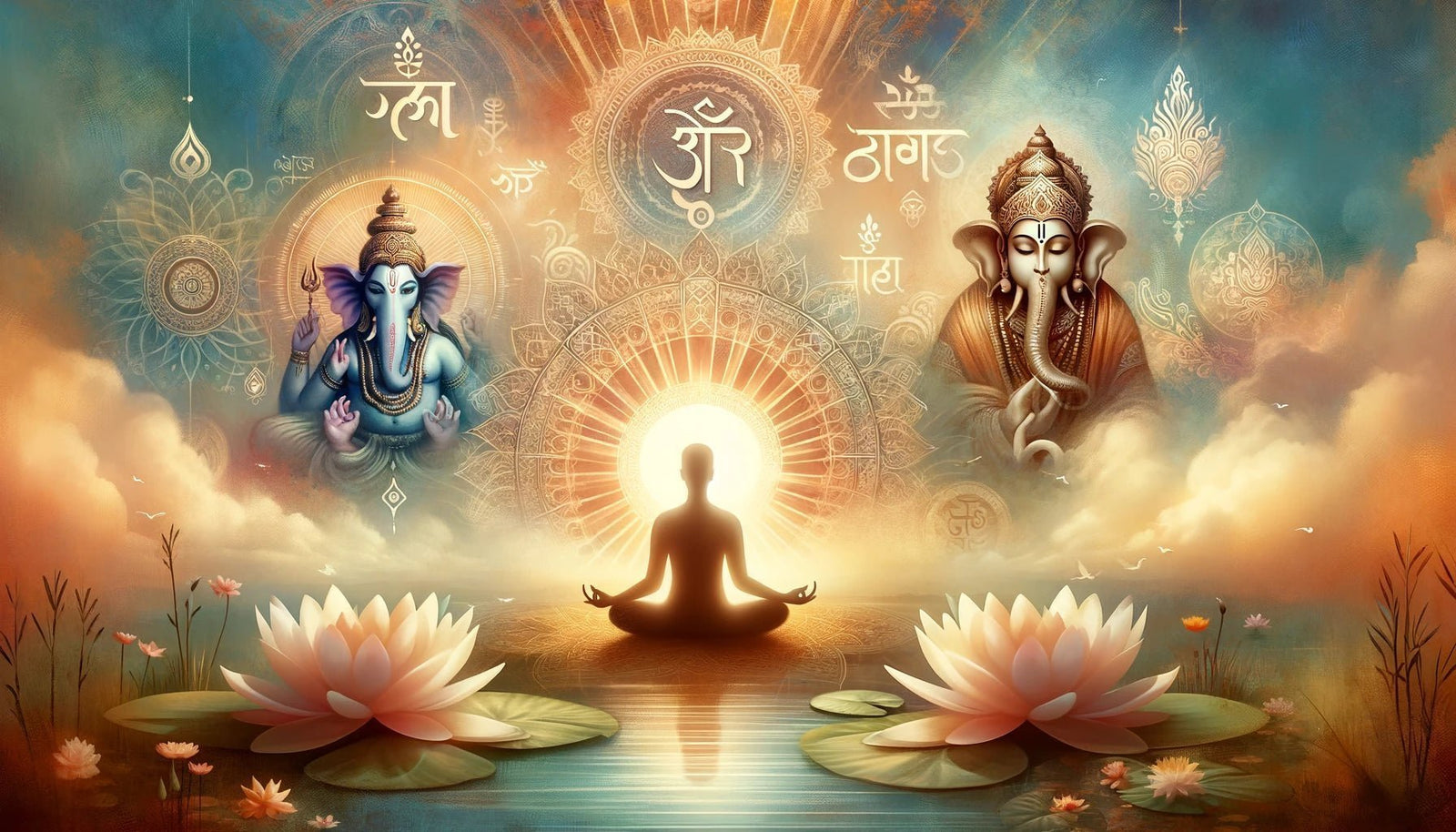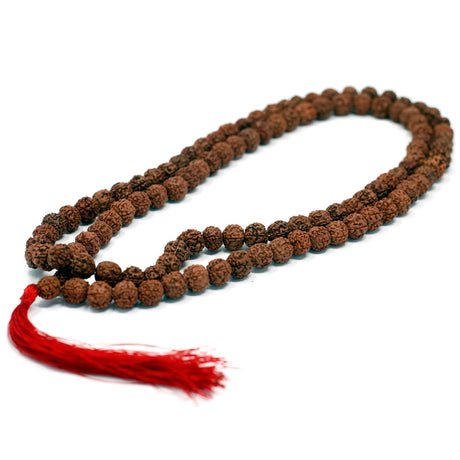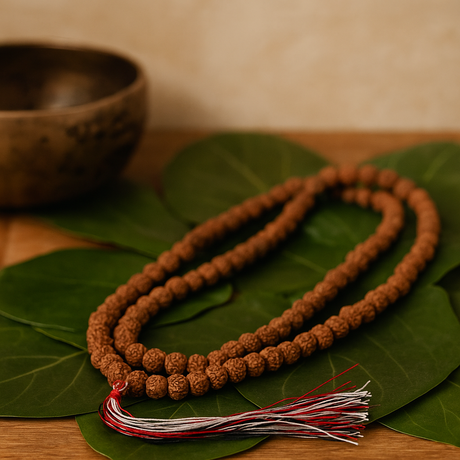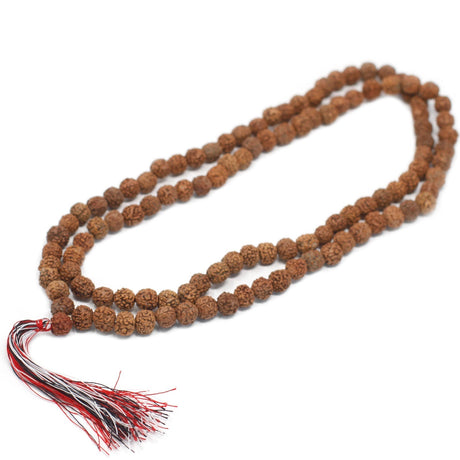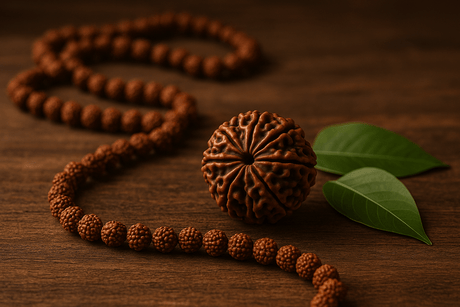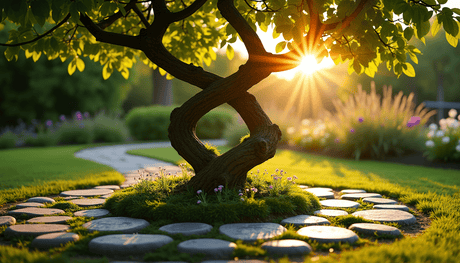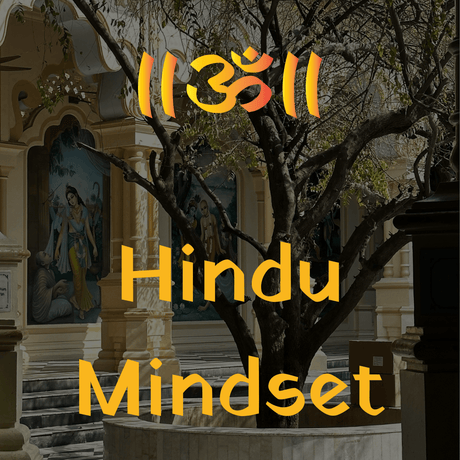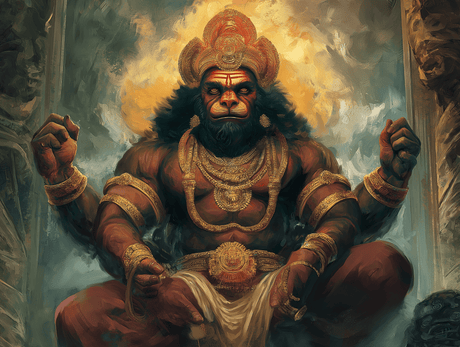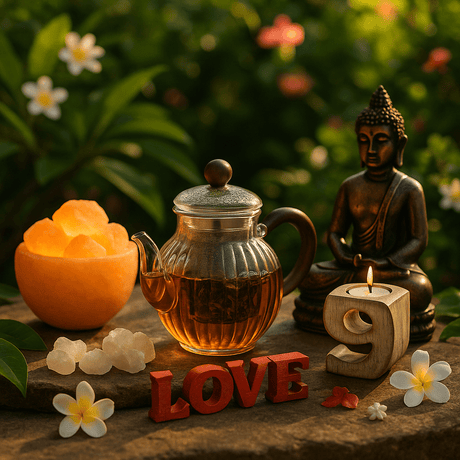Mantras, those sacred sounds and phrases from the ancient Vedic tradition, hold immense power. More than just words, they are vibrations that resonate with the universe, creating a harmonious connection and fostering positive change. By chanting mantras with focus and intention, we can release anxieties, sharpen focus, and ultimately, transform our lives.
This guide explores ten powerful Vedic mantras, each with its unique purpose and profound meaning. From seeking the blessings of Ganesha, the remover of obstacles, to connecting with the transformative power of Lord Shiva, these mantras offer a path towards inner peace, strength, and spiritual growth.
Ganapati Mantra (गणपति मंत्र)

🐘 Chanting the Ganesh Mantra first is essential because Lord Ganesha is the remover of obstacles. His blessings pave the way for success and prosperity in any endeavor. The mantra invokes divine grace, fostering humility and devotion, ensuring a smooth journey ahead.
ॐ गन गणपतए नमो नमः
श्री सिद्धि विनायक नमो नमः
अष्टविनायक नमो नमः
गणपति बाप्पा मोरयाOm Gan Ganapataye Namo Namah
Shree Siddhi Vinayak Namo Namah
Ashtavinayak Namo Namah
Ganapati Bappa Moraya
This mantra is a powerful invocation dedicated to Lord Ganesha, the remover of obstacles and the deity of wisdom, prosperity, and success.
- "Om Gan Ganapataye Namo Namah": This part of the mantra is an invocation to Lord Ganesha, addressing him by various names like "Ganapati" and "Ganapataye." The repetition of "Namo Namah" signifies reverence and surrender, expressing devotion and respect towards Lord Ganesha.
- "Shree Siddhi Vinayak Namo Namah": Here, Lord Ganesha is hailed as "Siddhi Vinayak," the bestower of success and accomplishments. "Shree" denotes auspiciousness and divine grace.
- "Ashtavinayak Namo Namah": This line refers to Lord Ganesha as "Ashtavinayak," indicating his presence in eight different forms or temples across India. The repetition of "Namo Namah" reaffirms the devotee's reverence and devotion.
- "Ganapati Bappa Moraya": This is a popular phrase often used in celebrations and prayers dedicated to Lord Ganesha. "Ganapati" refers to Lord Ganesha, "Bappa" means father or lord, and "Moraya" is a term of reverence. Together, "Ganapati Bappa Moraya" is an invocation seeking the blessings and presence of Lord Ganesha.
This mantra is chanted to seek the blessings of Lord Ganesha for the removal of obstacles, the attainment of success and prosperity, and the fulfillment of wishes. It is commonly recited at the beginning of new ventures, rituals, and auspicious occasions to invoke the divine grace of Lord Ganesha.
Maha Mrityunjaya Mantra (महा मृत्युंजय मंत्र)

ॐ त्र्यम्बकं यजामहे
सुगन्धिं पुष्टिवर्धनम् ।
उर्वारुकमिव बन्धनान्
मृत्योर्मुक्षीय मामृतात् ॥Aum Tryambakam Yajaamahe
Sugandhim Pushti- Vardhanam
Urvaarukamiva bandhanaan
Mrityor Muksheeya Mamritaat
The Maha Mrityunjaya Mantra is a powerful invocation dedicated to Lord Shiva, the supreme deity in Hinduism associated with destruction and transformation. It is believed to possess immense spiritual significance and is chanted for protection, healing, and spiritual upliftment.
- "Aum Tryambakam Yajaamahe": This part serves as an invocation to Lord Shiva. "Tryambakam" refers to the three-eyed Lord Shiva, while "Yajaamahe" means "we worship" or "we meditate upon."
- "Sugandhim Pushti-Vardhanam": This describes the divine qualities of Lord Shiva. "Sugandhim" means "fragrant" or "perfumed," symbolizing his auspiciousness, while "Pushti-Vardhanam" refers to his role in nourishing and promoting growth.
- "Urvaarukamiva Bandhanaan": This phrase compares life to a cucumber (urvaarukam), signifying the desire to be freed from the bondage of worldly attachments and ignorance.
- "Mrityor Muksheeya Mamritaat": This is the concluding part of the mantra, expressing the ultimate prayer for liberation from the cycle of birth and death (moksha) and attainment of immortality (amritam). It seeks protection from death and liberation from the fear of mortality, leading to eternal bliss.
The Maha Mrityunjaya Mantra is chanted for protection, healing, and spiritual upliftment. It is believed to bestow divine blessings, remove fears, and grant victory over the cycle of life and death.
Guru Mantra (गुरु मंत्र)

गुरुर्ब्रह्मा, गुरुर्विष्णु
गुरुर्देवो महेश्वर:
गुरुर्साक्षात् परब्रह्म
तस्मै श्री गुरुवे नमःGuru Brahma Gurur Vishnu
Guru Devo Maheshwaraha
Guru Saakshat Para Brahma
Tasmai Sri Gurave Namaha
The mantra you provided is a Sanskrit shloka that pays homage to the Guru, the spiritual teacher or guide.
- "Guru Brahma Gurur Vishnu": This line acknowledges the Guru as Brahma, the creator of the universe, and Vishnu, the preserver of the universe. It signifies the Guru's role in guiding and nurturing spiritual growth and creation.
- "Guru Devo Maheshwaraha": This part recognizes the Guru as Maheshwara, another name for Lord Shiva, who represents the principle of destruction or transformation in Hindu mythology. It highlights the Guru's ability to lead disciples through the process of spiritual transformation and liberation.
- "Guru Saakshat Para Brahma": This phrase declares the Guru as the embodiment of Para Brahma, the supreme reality or absolute consciousness. It emphasizes the Guru's role as a direct manifestation of the divine and the ultimate source of spiritual knowledge and enlightenment.
- "Tasmai Sri Gurave Namaha": This is the concluding part of the mantra, where the devotee offers salutations and reverence to the Guru. It expresses gratitude and devotion to the Guru for imparting spiritual wisdom and guidance. The term "Sri Gurave" is a respectful address to the Guru, acknowledging their greatness and divinity.
Overall, this mantra extols the importance of the Guru in the spiritual journey, recognizing the Guru as the ultimate guide who leads disciples towards self-realization and union with the divine. It is often recited as a form of prayer or meditation to invoke the blessings and grace of the Guru.
Shiva Gayatri Mantra (शिव गायत्री मंत्र)

ॐ तत्पुरुषाय विद्महे
महादेवाय धीमहि
तन्नो रुद्रः प्रचोदयात्।Om Tatpurushaya Vidmahe
Mahadevaya Dhimahi
Tanno Rudrah Prachodayat
The Mantra dedicated to Lord Rudra, another name for Lord Shiva.
- "Om Tatpurushaya Vidmahe": The mantra begins with the sacred syllable "Om," which represents the cosmic sound of creation and the ultimate reality. "Tatpurushaya" refers to Lord Shiva as the Supreme Being beyond form and attributes. "Vidmahe" means "let us meditate upon" or "let us know."
- "Mahadevaya Dhimahi": "Mahadevaya" is another name for Lord Shiva, meaning "the great god." "Dhimahi" signifies meditation or contemplation. So, this part of the mantra is an invitation to meditate upon Lord Shiva, recognizing his greatness and divine attributes.
- "Tanno Rudrah Prachodayat": "Tanno Rudrah" means "we meditate upon Rudra." Rudra is another name for Lord Shiva, often associated with his fierce and destructive aspect. "Prachodayat" means "may inspire" or "may guide." This part of the mantra is a prayer for divine inspiration and guidance from Lord Shiva.
Mantra is a reverential invocation to Lord Shiva, seeking his blessings, guidance, and inspiration. It is often recited by devotees as a form of prayer and meditation to connect with the divine presence of Lord Shiva and invoke his grace for spiritual upliftment and inner transformation.
Brahma Gayatri Mantra (ब्रह्मा गायत्री मंत्र)

ॐ वेदात्मनाय विद्महे
हिरण्यगर्भाय धीमहि
तन्नो ब्रह्मा प्रचोदयात्।Om Vedathmanaya Vidmahe
Hiranya Garbhaya Dheemahi
Tanno Brahma Prachodayat.
The Mantra dedicated to Lord Brahma, the creator deity in Hinduism.
- "Om Vedathmanaya Vidmahe": The mantra begins with the sacred syllable "Om," representing the cosmic sound of creation and the ultimate reality. "Vedathmanaya" refers to Lord Brahma as the embodiment of the Vedas, the sacred scriptures of Hinduism. "Vidmahe" means "let us meditate upon" or "let us know."
- "Hiranya Garbhaya Dheemahi": "Hiranya Garbhaya" translates to "the golden womb" and refers to Lord Brahma as the cosmic source of creation. "Dheemahi" signifies meditation or contemplation. So, this part of the mantra is an invitation to meditate upon Lord Brahma, recognizing his role as the source of creation and the cosmic womb from which the universe emerges.
- "Tanno Brahma Prachodayat": "Tanno Brahma" means "we meditate upon Brahma." "Prachodayat" means "may inspire" or "may guide." This part of the mantra is a prayer for divine inspiration and guidance from Lord Brahma.
This mantra is a reverential invocation to Lord Brahma, seeking his blessings, guidance, and inspiration. It is often recited by devotees as a form of prayer and meditation to connect with the divine presence of Lord Brahma and invoke his grace for creative inspiration, knowledge, and wisdom.
Govinda Ashtakam (गोविन्द अष्टकम)

गोविन्द जय जय गोपाल जय जय।
राधा रमण हरिबल हरिजय जय जय॥Govinda jaya jaya, Gopala jaya jaya
Radha-ramana Hari-bal Hari-jaya jaya
This mantra is a devotional chant that glorifies Lord Krishna, particularly in his forms as Govinda and Gopala, along with his divine consort Radha.
- "Govinda jaya jaya, Gopala jaya jaya": This part of the mantra offers salutations and victory chants to Lord Krishna in his forms as Govinda and Gopala. "Govinda" refers to Lord Krishna as the giver of pleasure to the senses, while "Gopala" means the protector of cows, signifying Krishna's role as a cowherd. The repetition of "jaya jaya" emphasizes victory and celebration, expressing reverence and devotion to Lord Krishna.
- "Radha-ramana Hari-bal Hari-jaya jaya": This line celebrates the divine relationship between Lord Krishna and Radha, his eternal consort. "Radha-ramana" means "the delighter of Radha," highlighting Krishna's affection for Radha. "Hari-bal" refers to Krishna as the one who possesses the strength of Lord Hari (another name for Vishnu or Krishna). Again, the repetition of "jaya jaya" reinforces the sense of victory and celebration in the devotion to Lord Krishna.
Overall, this mantra is a joyful expression of devotion to Lord Krishna and Radha, celebrating their divine presence and offering praise and victory chants to them. It is often chanted by devotees as a form of worship and meditation to deepen their connection with the divine couple and experience the bliss of divine love.
Shiva Mantra (शिव मंत्र)

ॐ नमो शिवाय गुरवे सच्चिदानन्द मूर्तये नमस्तस्यै नमस्तस्यै नमस्तस्यै नमो नमः
Om Namo Shivaya Gurave Satchidananda Murtaye
Namastasye Namastasye Namastasye Namoh Namaha
The mantra "Om Namo Shivaya Gurave Satchidananda Murtaye Namastasye Namastasye Namastasye Namoh Namaha" is a Sanskrit invocation that pays homage to Lord Shiva and the Guru.
- "Om Namo Shivaya": This is a powerful mantra dedicated to Lord Shiva, one of the principal deities of Hinduism. It expresses reverence and surrender to Lord Shiva, acknowledging his supreme nature and divine attributes. "Om" represents the primordial sound of the universe, while "Namo Shivaya" translates to "I bow to Shiva."
- "Gurave": This word refers to the Guru, the spiritual teacher or guide who leads seekers on the path of enlightenment. The Guru is seen as the embodiment of divine wisdom and grace.
- "Satchidananda Murtaye": This phrase describes the form of the Guru, representing the embodiment of Sat (existence), Chit (consciousness), and Ananda (bliss). It signifies the Guru as the manifestation of the ultimate truth and bliss.
- "Namastasye Namastasye Namastasye Namoh Namaha": This repetition of "Namastasye" (meaning "salutations to you") followed by "Namoh Namaha" (meaning "my salutations to you") expresses deep respect and devotion. The repetition emphasizes the intensity of reverence and surrender to both Lord Shiva and the Guru.
The mantra is a profound invocation that acknowledges the divine presence of Lord Shiva and the Guru, seeking their blessings, guidance, and grace on the spiritual journey towards self-realization and liberation. It is often chanted as a form of prayer, meditation, or offering in Hindu spiritual practices.
Aigiri Nandini (ऐगिरि नंदिनि)

आयि गिरिनन्दिनि नन्दितमेदिनि विश्वविनोदिनि नन्दिनुते गिरिवरविन्ध्यशिरोऽधिनिवासिनि विष्णुविलासिनि जिष्णुनुते॥ भगवति हे शितिकण्ठकूटमिन्दिनि विमलाविभूतिंविचित्रबान्धुरत्वंसमितिन्दुते। द्राक्षादिचुतकञ्चुकापुरूषायस्तेजस्विनीनांपतितामवल्लतेन्दुरूपे॥
Ayi giri nandini nandhitha medhini
Viswa vinodhini nandanuthe
Giri vara vindhya shirodhini vasini
Vishnu vilasini Jishnu nuthe
Bhagavathi hey sithi kanda kudumbini
Bhoori kudumbini bhoori kruthe
Jaya jaya he mahishasura mardhini
Ramya kapardini shaila Suthe
The "Aigiri Nandini" mantra is a powerful hymn dedicated to Goddess Durga, particularly in her form as Mahishasura Mardini, the slayer of the buffalo demon Mahishasura.
- "Ayi Giri Nandini Nandhitha Medhini": This line addresses Goddess Durga as "Ayi Giri Nandini," praising her as the daughter of the mountain (Himalaya), the one who brings joy to the earth ("Nandhitha Medhini"). This line highlights her divine presence and auspiciousness, symbolizing her ability to bring peace and prosperity.
- "Viswa Vinodhini Nandanuthe": Here, Goddess Durga is hailed as "Viswa Vinodhini," meaning the one who delights the universe ("Viswa"). "Nandanuthe" further emphasizes her role as the source of joy and happiness for all beings.
- "Giri Vara Vindhya Shirodhini Vasini": This line describes Goddess Durga as the one who resides on the peaks of the Vindhya mountains ("Giri Vara Vindhya") and who dwells in the Himalayas ("Shirodhini Vasini"). It signifies her presence in the natural world and her connection to the mountains, symbolizing her strength and power.
- "Vishnu Vilasini Jishnu Nuthe": Goddess Durga is praised here as "Vishnu Vilasini," indicating her association with Lord Vishnu and her participation in his divine activities. "Jishnu Nuthe" means she is revered by Jishnu, another name for Lord Vishnu or Lord Krishna, signifying her importance and divine status.
- "Bhagavathi Hey Sithi Kanda Kudumbini": This line addresses Goddess Durga as "Bhagavathi," a term of reverence meaning the divine goddess. "Sithi Kanda Kudumbini" refers to her role as the mother of Skanda (Lord Kartikeya), indicating her maternal aspect and her connection to the divine family.
- "Bhoori Kudumbini Bhoori Kruthe": Here, Goddess Durga is praised as "Bhoori Kudumbini," meaning the one with a vast family ("Bhoori Kudumbini") and "Bhoori Kruthe," the one who bestows abundance and blessings upon her devotees.
- "Jaya Jaya He Mahishasura Mardhini Ramya Kapardini Shaila Suthe": The mantra concludes with victory chants to Mahishasura Mardini, the slayer of the buffalo demon Mahishasura. Goddess Durga is also hailed as "Ramya Kapardini," meaning the beautiful one with matted locks, and "Shaila Suthe," indicating her connection to the mountains.
Overall, this mantra praises Goddess Durga for her divine qualities, strength, and her victory over evil forces, symbolizing her role as the protector and benefactor of devotees. It is often recited by devotees seeking her blessings, protection, and grace.
Narasimha Mantra (नरसिंह मंत्र)

ॐ उग्रं वीरं महा विष्णुं
ज्वलन्तं सर्वतो मुखं नृसिंहं भीषणं भद्रम्।
मृत्यु मृत्यु नमम् यहाम्॥Om Ugram Veeram Maha Vishnum
Jwalantam Sarvato Mukham Nrisimham Bhishanam Bhadram
Mrityu Mrityu Namam Yaham
The Narasimha Mantra, also known as the Narasimha Maha Mantra, is a powerful invocation dedicated to Lord Narasimha, the fourth avatar of Lord Vishnu.
- "Om Ugram Veeram Maha Vishnum": This part begins with the sacred syllable "Om," representing the cosmic sound of creation and the ultimate reality. "Ugram Veeram" refers to Lord Narasimha as the fierce and courageous one. "Maha Vishnum" acknowledges Narasimha as the great Lord Vishnu, the preserver and sustainer of the universe.
- "Jwalantam Sarvato Mukham Nrisimham Bhishanam Bhadram": This line describes Lord Narasimha's fearsome form. "Jwalantam" means blazing or shining brightly, signifying his intense radiance. "Sarvato Mukham" indicates that he is present everywhere, with faces in all directions. "Nrisimham Bhishanam" describes him as the terrifying form of Narasimha. "Bhadram" denotes auspiciousness and divine grace, highlighting the benevolent aspect of Narasimha even in his ferocious form.
- "Mrityu Mrityu Namam Yaham": This part is a prayer for protection from death. "Mrityu" means death, and "Namam" means I bow down to or I offer salutations. "Yaham" signifies the one who offers these salutations. Thus, this line is a humble plea to Lord Narasimha to protect the devotee from the fear and cycle of death.
This mantra praises Lord Narasimha for his divine attributes, strength, and ability to protect his devotees from all dangers and adversities, including the fear of death. It is often recited by devotees seeking his blessings, divine protection, and liberation from the cycle of birth and death.
Radhe Radhe Bol (राधे राधे बोल)

राधे राधे बोल सजनी
सखी राधे राधे बोल
हरे कृष्ण हरे कृष्ण बोल सजनी
सखी हरे कृष्ण हरे कृष्ण बोलRadhe Radhe Bol Sajani
Sakhi Radhe Radhe Bol
Hare Krishna Hare Krishna Bol Sajani
Sakhi Hare Krishna Hare Krishna Bol
This mantra is a devotional song expressing love and devotion towards Radha and Krishna, the divine couple in Hindu mythology.
- "Radhe Radhe Bol Sajani": This line is a reverential call to Radha, expressing love and devotion towards her.
- "Sakhi Radhe Radhe Bol": It calls upon a friend or companion to join in chanting the name of Radha with devotion and joy.
- "Hare Krishna Hare Krishna Bol Sajani": This line shifts the focus to Krishna, invoking his presence and calling upon him with love and devotion through the chanting of his holy name.
- "Sakhi Hare Krishna Hare Krishna Bol": Similar to the second line, this invites the companion or friend to chant the name of Krishna with devotion and joy.
The mantra is an expression of devotion and love towards Radha and Krishna, inviting their divine presence and blessings through the chanting of their holy names. It's often sung with fervor and sincerity by devotees to deepen their spiritual connection with the divine couple.
How to Chant Vedic Mantras
Unleashing the transformative power of Vedic mantras begins with a simple practice. Here's a step-by-step guide to get you started:
Preparation
- Find a Quiet Space. Choose a serene environment to enhance focus on the mantra's vibrations.
- Sit Comfortably. Opt for a relaxed upright position, using postures like Sukhasana (easy pose) or Padmasana (lotus pose) for stability.
- Set an Intention. Clearly define your goal for the session, such as seeking peace, clarity, or spiritual connection.
Engage Mind and Spirit
- Connect with the Divine. Visualize the deity associated with the mantra, offering prayers or gratitude.
- Understand the Mantra. Comprehend the meaning behind the words to deepen your connection and enhance its power.
Chanting Process
- Pronunciation. Aim for accurate pronunciation, using online guides and recordings for assistance.
- Volume and Tone. Start silently, then chant aloud in a conversational tone, elongating vowels for resonance.
- Melody and Rhythm. If comfortable, add a melody and maintain a consistent rhythm.
- Use a Japa Mala (Optional). Employ a japa mala with 108 beads to count repetitions and aid concentration.
Repetition and Completion
- Determine Repetitions. Commonly, 108 repetitions are recommended. Conclude with silence, letting the vibrations settle.
Tips for Regular Practice
Consistency. Regular practice deepens the mantra's impact.
Use a Timer. Optionally, set a timer for 15-30 minutes instead of counting repetitions.
Quick Sessions. For immediate calm, silently chant for 3-5 minutes before stressful events.
Conclusion 🧘🏼♀️
In conclusion, Vedic mantras are powerful tools that connect us with ancient energies and foster transformative changes. Each mantra, whether for deities like Ganesha, Shiva, or Krishna, offers unique benefits, from removing obstacles to enhancing spiritual awareness. Regularly incorporating these sacred chants into your routine not only deepens your spiritual connection but also promotes overall well-being. Embrace these practices to enrich your life and experience profound spiritual growth.
